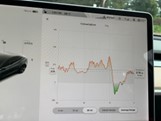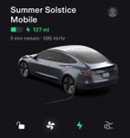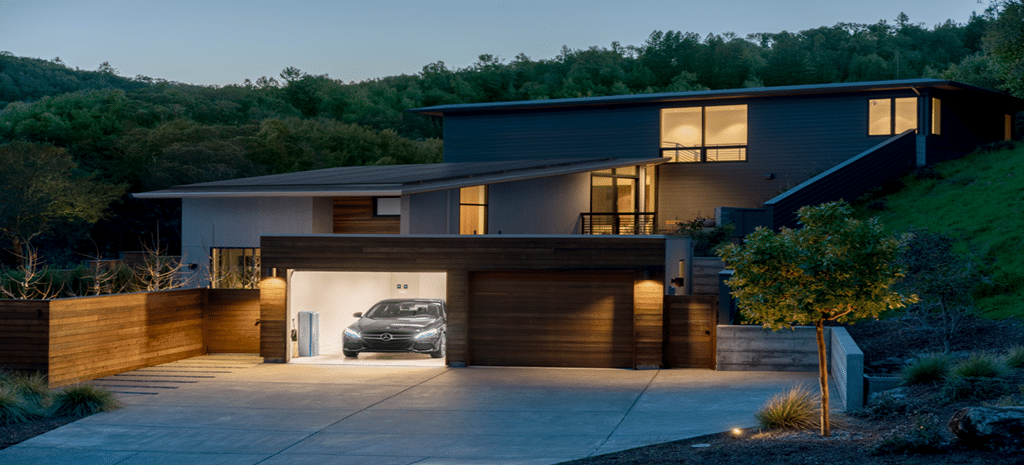This article series describes my journey from a standard consumer to a prosumer and from owning a gasoline-powered vehicle to owning an electric vehicle (EV). I was led to making these two decisions to lower my ever-rising electric and gasoline bills, to enhance the resilience of my house to power outages, and to promote clean air.

Image: Twitter
The report includes economic analysis behind the decisions, explains what it took to implement them, and provides the results during the time that has elapsed since I became a prosumer and EV driver.
Buying the EV
To further enrich our prosumer experience, I decided to trade in the Porsche Boxster I had owned for 14 years for a Tesla Model 3 (long range) sedan. The Model 3 has become ubiquitous where I live. One day I recalled seeing five Model 3’s in five minutes while driving to the Whole Foods grocery store. About a dozen friends drove the Model 3 so I solicited their experience. All gave me really positive feedback. I also checked the reviews on Consumers Report and social media and convinced it was a no-lose proposition, took the plunge.

It’s a car like no other: essentially a computer on wheels with “One screen that rules them all.”
I traded in my two-seater convertible that had faithfully served me since 2005. It had become a tad expensive to maintain, and as the years went by, whenever I drove it with the top down (which was the best part of the car), my nasal allergies went out of control.
But giving it away broke my heart. That car was loaded with so many memories, including the drive on the floor of the Yosemite Valley which we had done the month after we bought it.
Picking an Electric Rate
Then I had to pick an electric rate for my house. Being an economist who had spent a good chunk of my career on rate design, I had thought this would have been the easy part. It turned out to the hardest nut to crack and sullied the prosumer experience.
I was currently on a time-of-use rate whose off-peak price was 26 cents per kWh and on-peak price was 37 cents per kWh. A few years ago, I had picked that rate my going to the local utility’s website and using the handy bill calculator to calculate what my bill would be across a few rate design options. But all of those computations were contingent on the load shape of my house during the past 12 months. With all the prosumer technologies, the load shape was going to change.
My friends who drove electric cars were on a whole-house EV rate where the off-peak price dropped to 13 cents per kWh. But the on-peak rate was going to rise to 43 cents per kWh. We keep the thermostat at 72 degrees during the summer. Would the bills rise or fall if I switched to that rate? My new load shape did not exist yet so the utility website was unable to provide me with any guidance. Of course, solar would reduce my afternoon load but by how much and at what time? I reached out to the solar installer but they could not provide me that information either.
I knew once I got the panels installed, I would have to be on some TOU rate with a minimum $10 monthly charge. It would take several months to install the solar panels. In the meantime, should I switch to a TOU rate that would be ideal for charging my EV? Could I pick such a rate just for the EV. The good news was that the local utility also offered an EV-only rate. Should I look into that? The first thing I did was sent an email to the Tesla salesman. He never responded.
So, I called the local utility. I knew from the website there would be a charge of $100 for the separate EV meter. It was possible that with my acquisition of an EV and the installation of a 220-volt charger, I would have to upgrade the main electrical panel for the house. But I may have to do that anyway since in a few months solar panels would be installed. No one seemed to know the answer to that question.
So, I thought I would go ahead with the EV-only meter. I called the utility. I was told that there would be a $5,000 charge for putting the underground line from the pole to my house in a conduit. The Green Book required it. The only Green Book I knew was the one written by the former Libyan dictator. Colonel Gaddafi had written it as a riposte to Chairman Mao’s Red Book.

So, the separate EV TOU rate was no longer on the table for my house. With the standard 110-volt outlet, the speed of charging works out to 4 miles per hour. With a range of 325 miles, it would take 81.25 hours to get the car fully charged, which was ridiculous. With a 240-volt outlet, the speed of charging is 29-30 miles per hour. The car would be charged in 10-11 hours. I began to search for a contractor who would install a 240-volt outlet.
At a supercharger, the speed of charging varies by location and by how many cars are plugged in at the same time. In one instance, it was 385 miles per hour. The car would be fully charged in 0.84 hours or just under 51 minutes. But Tesla does not recommend using the Superchargers on a regular basis, since fast charging shortens the life of the battery. It recommends using the Superchargers just for long trips.
So, I reached out my friends and neighbors to see who had installed their 240-volt outlet. I got the names of several vendors, called them, they provided me their bids and I picked one.
But the issue was whether to wait until the solar panels and battery had been installed and the electric panel changed, or to do the panel change out and install the 240-volt outlet first. I talked to the two vendors and they talked to each other. I decided to wait. In the end, I chose the EV2-A rate. It is a three-period TOU rate. The picture on the left shows the rates as of March 2022. The picture on the right shows the rates as they were in 2019 when I bought the car.

I always charge during the off-peak period when I charge at home. Off-peak prices have gone up by 41% in three years.
Part three will conclude with Ahmad Faruqui’s assessment of the economics of being a prosumer.
The views and opinions expressed in this article are the author’s own, and do not necessarily reflect those held by pv magazine.
This content is protected by copyright and may not be reused. If you want to cooperate with us and would like to reuse some of our content, please contact: editors@pv-magazine.com.








72F T-stat setting is co$ting you. We’re in St Petersburg FL and our summer setting os 79F to 80F.
You might consider better insullation and/or reflective films on windows if you have lots of them facing the sun.